Dragon fruit (Hylocereus spp.), also known as pitaya, is a fast-growing climbing cactus prized for its vibrant pink or yellow fruits, dramatic flowers, and ease of care. However, because of its sprawling and climbing nature, proper support and trellising are essential for a healthy plant and high fruit yield—especially in home gardens and small spaces.
This article will walk you through everything you need to know about building the perfect support and trellis system for your dragon fruit vines.
Why Trellising Dragon Fruit Is Important
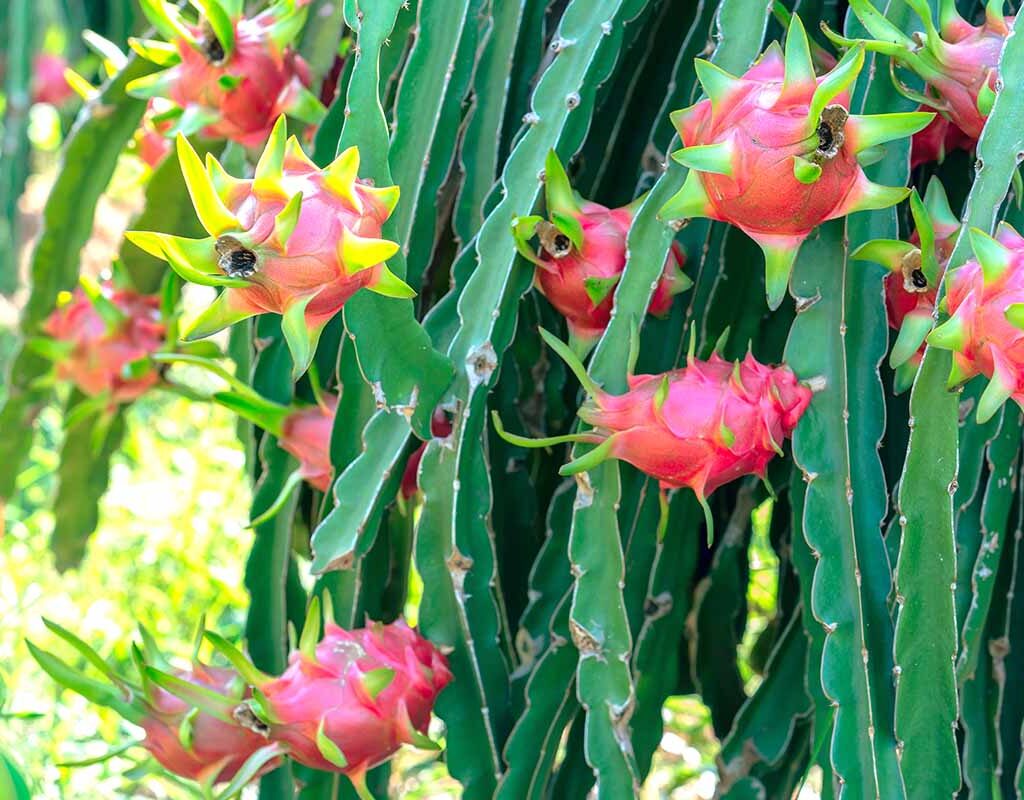
Before diving into methods, it’s crucial to understand why support is necessary:
- Structural Support: Dragon fruit vines can grow up to 20 feet long. Without support, they’ll sprawl on the ground, leading to broken stems and disease risk.
- Better Airflow and Sunlight: Elevating the plant promotes better air circulation and light exposure, reducing fungal infections and boosting fruit quality.
- Ease of Harvesting and Maintenance: A structured plant is easier to prune, fertilize, inspect, and harvest.
- Increased Yield: Supported plants are generally more productive and live longer.
Best Time to Install a Support System
Install your trellis or support structure at the time of planting or shortly after. Waiting too long may damage roots during installation or require excessive pruning.
Choosing the Right Trellis for Dragon Fruit
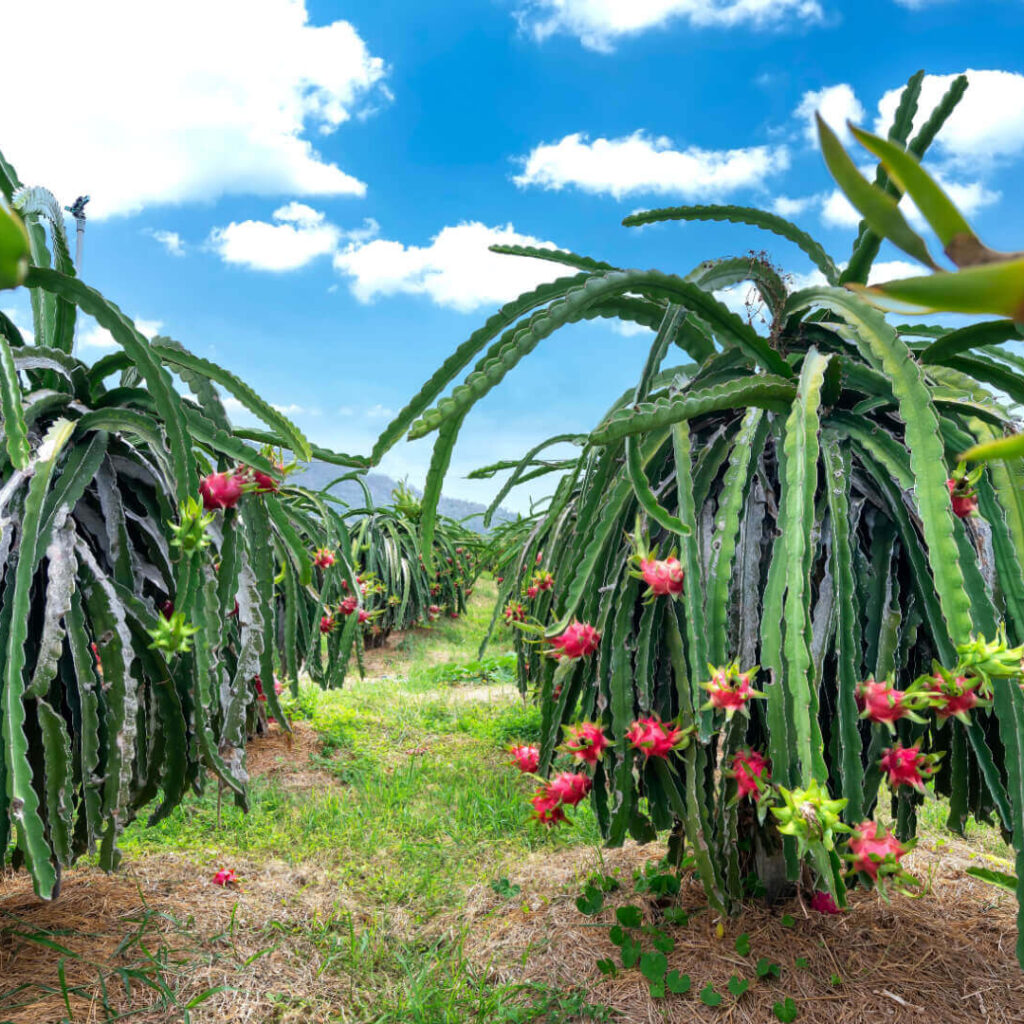
Several trellis designs work for dragon fruit. The right one depends on space, budget, aesthetics, and ease of maintenance. Here are popular options:
1. Concrete or Wooden Post with Circular Frame (Most Common)
- Design: A sturdy vertical post (4–6 feet above ground) with a circular or square frame at the top.
- Material: Concrete, treated wood, or PVC pipe.
- Top Frame: Can be made from rebar, old bicycle tires, or metal hoops.
- Why it works: Encourages the plant to grow up and cascade over the frame for flowering.
2. Teepee or Tripod Style
- Design: Three to four poles arranged in a teepee formation.
- Material: Bamboo, wood, or metal pipes.
- Advantages: Inexpensive, portable, and excellent for container gardens.
3. Wall or Fence Trellis
- Design: A vertical support system mounted on a wall or fence.
- Ideal for: Small balconies or urban gardens where space is limited.
4. Trellis Tower (For Pots)
- Design: Compact vertical cage-like trellis for potted plants.
- Tip: Use materials like galvanized wire mesh for rust resistance.
Step-by-Step Guide to Building a Basic Post Trellis
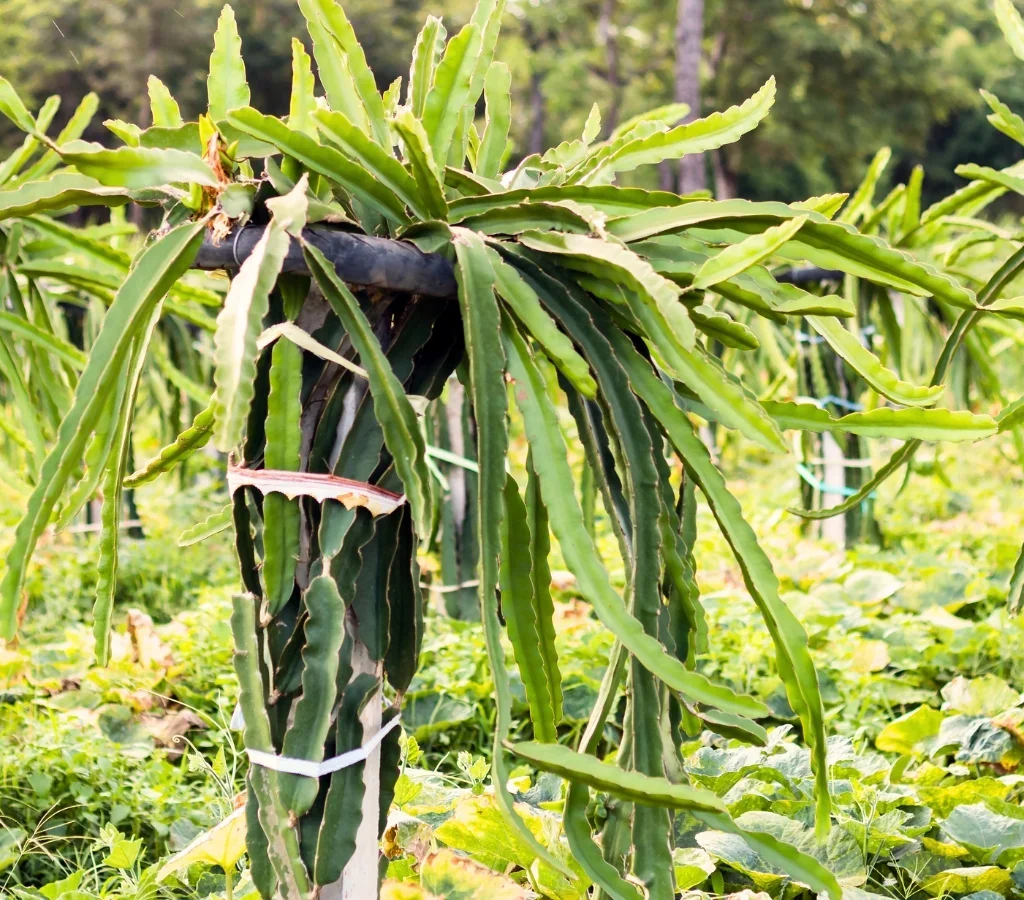
Here’s how to construct a simple and effective trellis system for your dragon fruit:
Materials Needed:
- One concrete or wooden post (6–8 feet long)
- One circular frame (metal ring or old tire)
- Cement (if embedding post into the ground)
- Twine, clips, or soft ties
- Optional: mulch and gravel for drainage
Instructions:
- Dig a Hole
Dig a 2-foot-deep hole for the post. Ensure it’s wide enough to hold the post and cement base. - Install the Post
Place the post in the hole and fill it with cement for stability. Let it cure for 24–48 hours. - Attach the Frame at the Top
Secure your circular frame to the top of the post using nails, screws, or sturdy wire. This frame will allow the plant to spread and cascade. - Secure the Plant
As the dragon fruit plant grows, tie the stems loosely to the post using soft ties. Avoid tight knots that may cut into the plant. - Encourage Canopy Growth
When the plant reaches the top, pinch the tip to stimulate lateral branching and formation of a canopy over the circular frame.
Maintenance of Trellised Dragon Fruit Plants
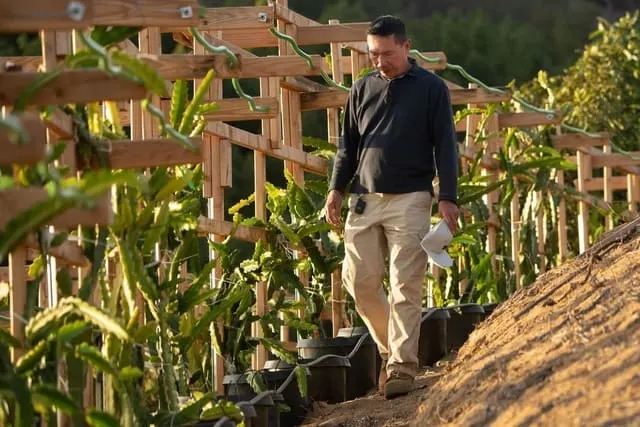
Proper trellising isn’t a set-it-and-forget-it job. Maintenance is crucial for long-term success.
1. Pruning
- Trim weak, damaged, or overcrowded stems.
- Keep 4–6 healthy branches on the top canopy to maintain airflow and light.
2. Securing Vines
- Regularly check ties and support as the plant grows.
- Retie stems every few months to prevent slippage or strain.
3. Cleaning the Base
- Remove weeds and apply mulch to keep the base clean and prevent fungal diseases.
4. Check for Damage
- Inspect the support structure for rust, rotting, or weakening.
- Reinforce or replace parts as needed.
Tips for Trellising in Small Spaces
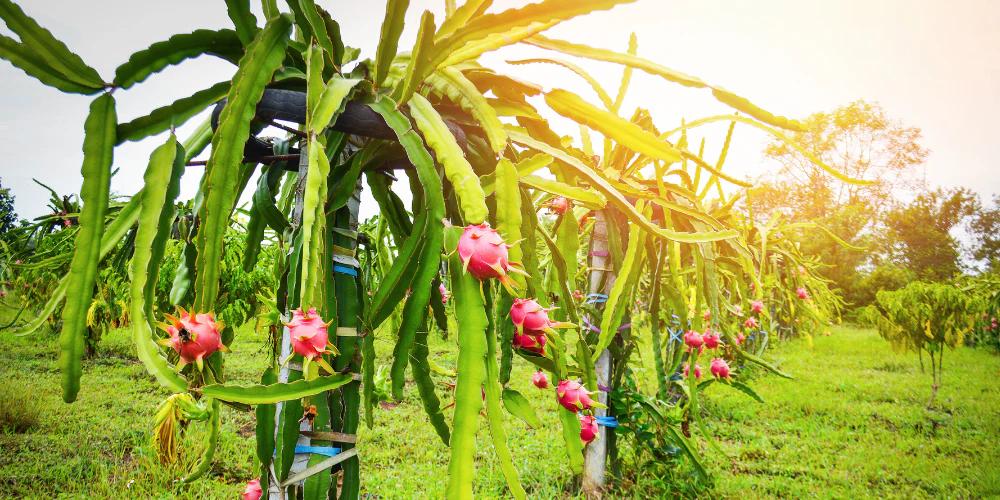
Urban gardeners can still enjoy dragon fruit with clever trellising:
- Use wall-mounted mesh panels or vertical planters.
- Choose compact trellis towers for balcony pots.
- Opt for wheels or portable structures to move the plant during extreme weather.
Common Mistakes to Avoid
- Using weak or short supports
A mature dragon fruit vine is heavy. Always overestimate the strength needed. - Using metal without treatment
Uncoated metal can rust and harm the plant. Use galvanized or painted metal. - Ignoring plant training
Letting vines grow unchecked leads to messy, weak growth and fewer fruits. - Overcrowding
Multiple plants on one trellis can lead to competition and poor air circulation.
Conclusion
Supporting and trellising dragon fruit is not just about looks—it’s essential for health, productivity, and ease of care. Whether you’re growing in a backyard, rooftop, or apartment balcony, investing in a strong support system pays off in vibrant growth and abundant fruit.
By understanding the climbing nature of dragon fruit and applying proper trellis techniques, even beginner gardeners can enjoy this exotic beauty in their own homes.

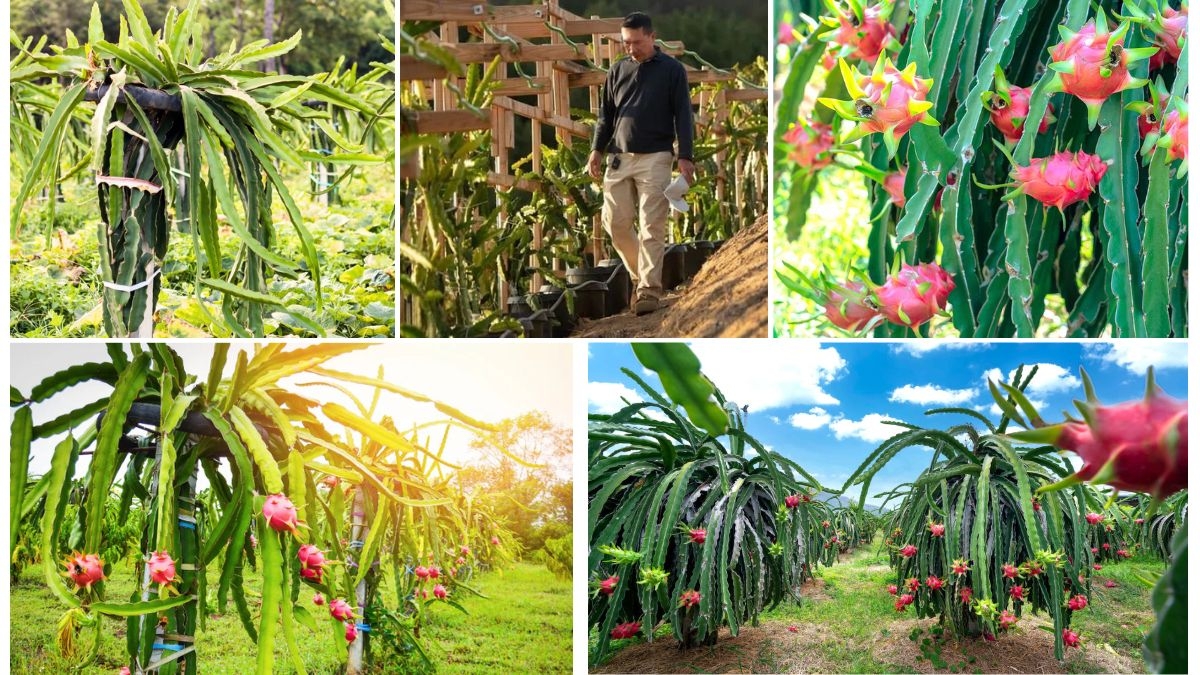





Leave A Comment